Beetles
July 30, 2015
There are around 40 families of beetles that contain predatory insects. Two of the most important are the lady beetles and the ground beetles.
Lady beetles (both larvae and adults) are important predators of a number of soft-bodied insects and mites, including aphids, scales, and mealybugs. Lady beetle adults found in Michigan range in size from about 1 1/2 mm long for some of the small black lady beetles that feed on scales and spider mites to 4 to 8 mm for the more familiar orange or red lady beetles. The adult is 6 mm long.
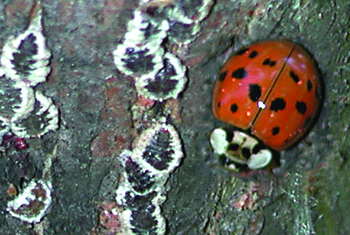
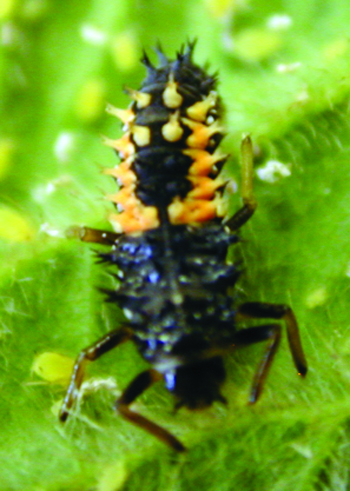
Left: adult multicolored Asian lady beetle feeding on European elm scale. Right: multicolored Asian lady beetle larva.
The multicolored Asian lady beetle, imported as early as 1916 for biological control of certain pest insects, has more recently earned a reputation as a ‘pest’ itself due to its tendency to overwinter in homes and other buildings. It is a prolific insect feeder during the growing season, and may be displacing native lady beetles. More information on multicoloured lady beetles can be found here.
The twice-stabbed lady beetle, Chilocorus kuwanae (not shown) is small and black with two red spots. The larva is black and spiny. It was imported from Korea as a biological control for euonymus scale, and is widely established in the United States.
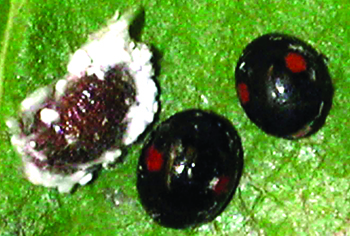
Adults and pupa of Hyperaspis binotata. These lady beetles were found feeding on magnolia scale. The larvae of these lady beetles and some others have waxy white coverings, which cause them to resemble mealybugs. These lady beetles are small; <4mm long. Lady beetles in related genera may feed on scales, adelgids, mites, aphids, and/or mealybugs.
Lady beetle adults can be recognized by their broadly oval to nearly round shape, and short, clubbed antennae. Leaf beetles, which are plant feeders, have longer antennae without a club at the end. See references for more detailed information.
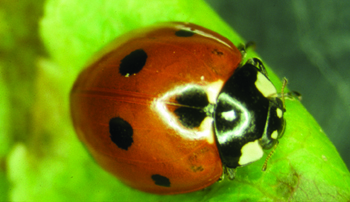
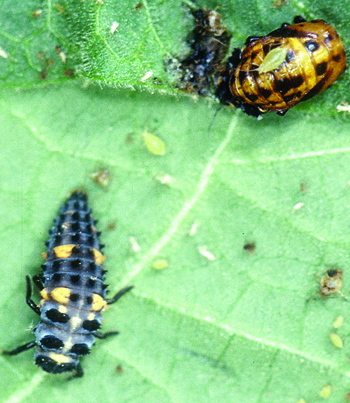
Left: Adult Coccinella sp. These lady beetles feed on aphids. Right: Larva and pupa of convergent lady beetle (Hippodamia convergens) in aphid colony.bove left: Adult Coccinella sp. These lady beetles feed on aphids.
Ground beetles - Adults are dark-colored with ridged wing covers (elytra), size range ~ 6 to 50 mm long. Their host range includes caterpillars, grubs, fly larvae and many adult insects. Larvae are also predaceous. The ground beetle below right, Calosoma sp. feeds on gypsy moth larvae.
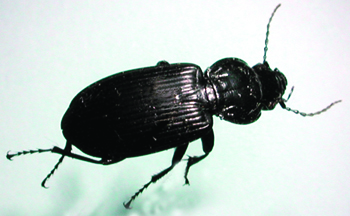
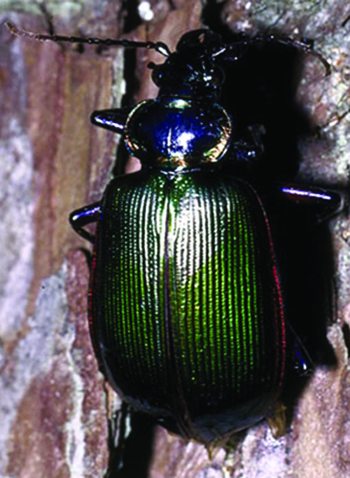
Calosoma photo: Ronald F. Billings, Texas Forest Service, image 3226045, www.forestryimages.org
True bugs - There are around 21 different families of true bugs that contain predators. All true bugs have sucking mouthparts, formed into tubular beaks, which predators extend forward to stab their prey. Predators may also have enlarged front forelegs with spines for grasping prey. Only a few families are listed.
Damsel bug - These true bugs look similar to assassin bugs, but are dull colored (gray, brown or yellowish) and smaller-usually less than 10 mm long. They feed on aphids, mites, thrips, small caterpillars and leafhoppers.
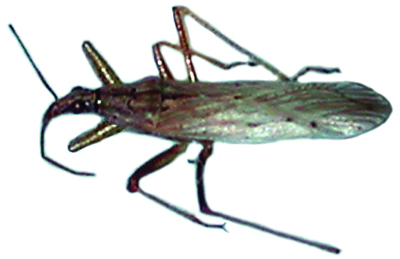
Assassin bugs - Both nymphs (shown here) and adults are predators on a variety of insects. They have long, narrow heads, and raptorial front legs for grasping prey. They vary from green to brown in color, and range in size from 12 to 36 mm long. They use their long beaks to stab prey, inject a digestive enzyme, and suck out the predigested body contents.
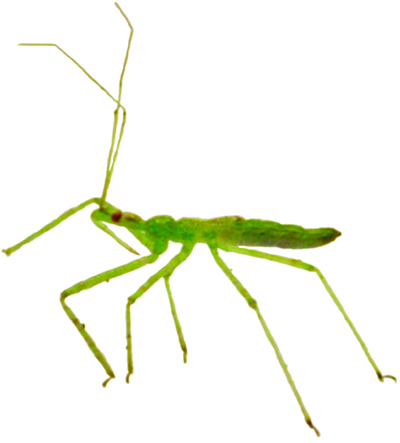
Spined soldier bugs - Both nymphs and adults of Podisius maculiventris, shown here, feed on caterpillars, beetle larvae, and other insects. This family of insects (Pentatomids) also contains plant feeders (look for downward-facing mouthparts for plant feeders).
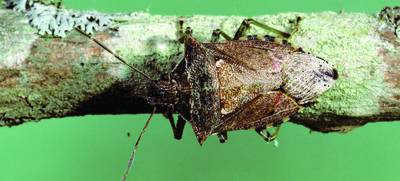
Adult spined soldier bug. Photo credit: Gerald J. Lenhard, Louisiana State University, image 0014174, www.forestryimages.org
Print a PDF of this page: Natural enemies - Beetles



 Print
Print Email
Email



